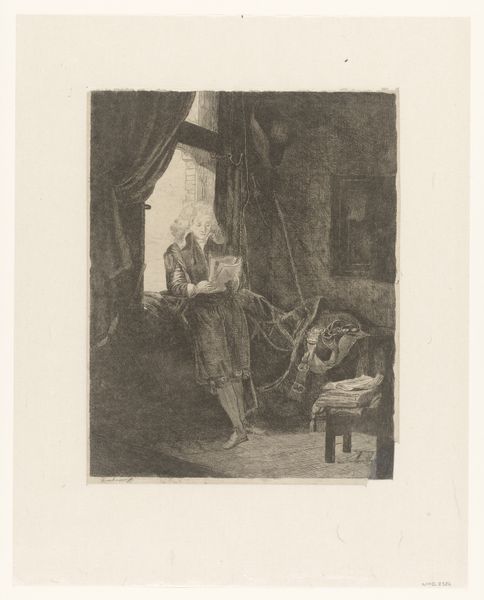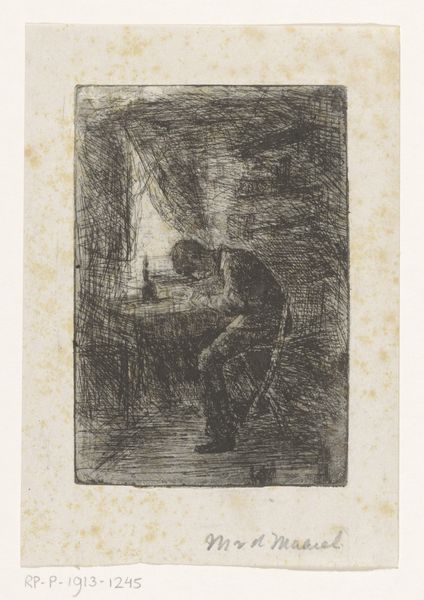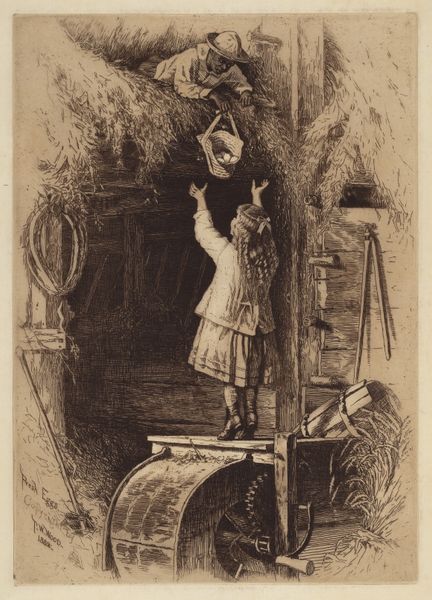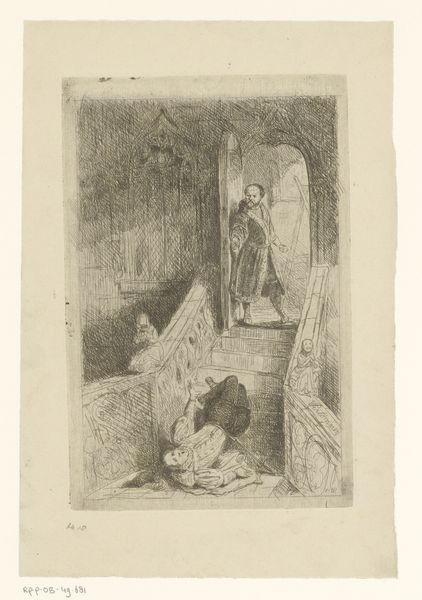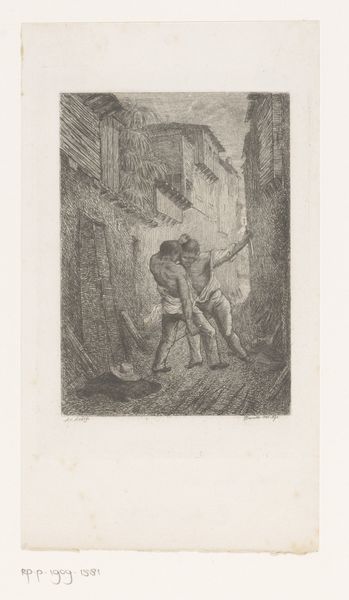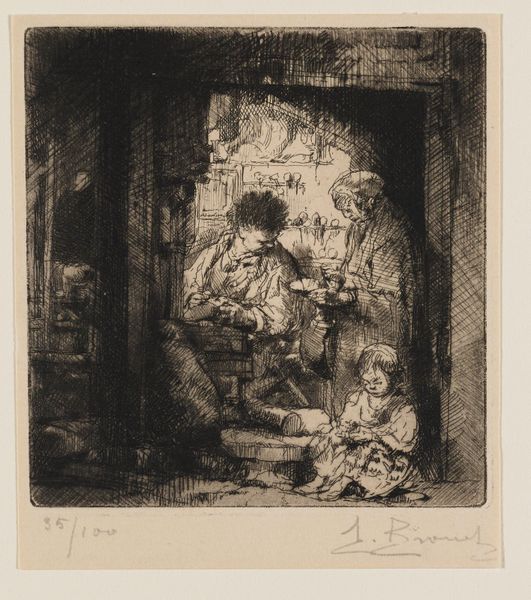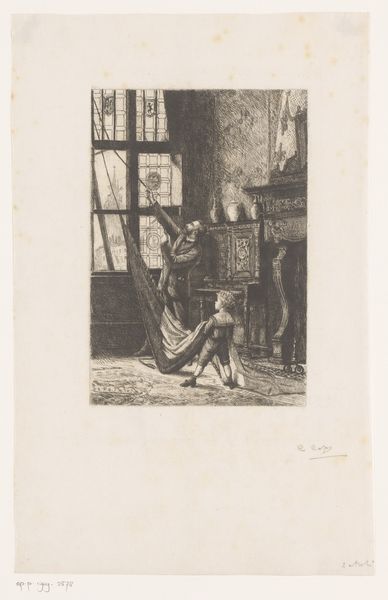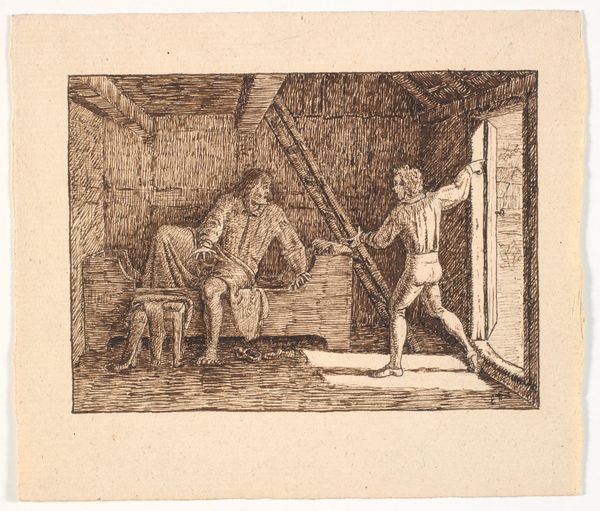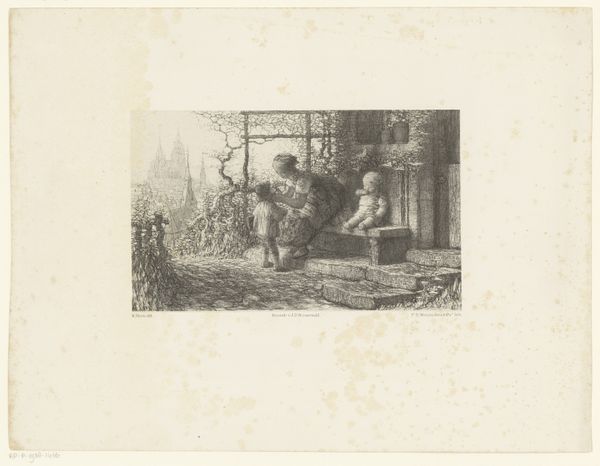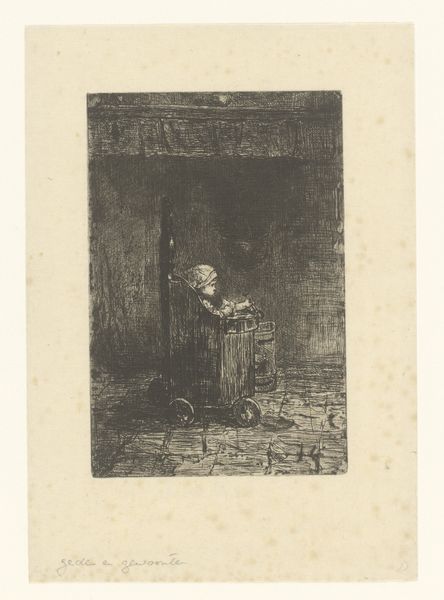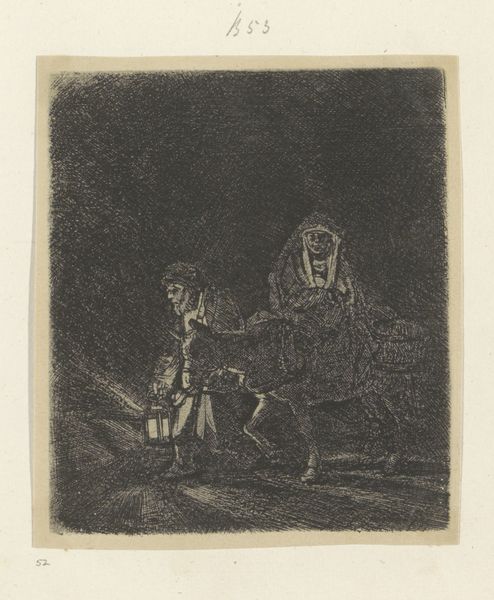
drawing, print, etching
#
drawing
# print
#
etching
#
genre-painting
#
realism
Dimensions: height 108 mm, width 90 mm
Copyright: Rijks Museum: Open Domain
Editor: We are looking at Charles Jacque's "Varkensslacht", or "Pig Slaughter" from 1844, made with etching. It's…intense. The textures are rough, and the overall impression is quite dark. How do you interpret the composition of this work? Curator: It is vital to acknowledge the etcher's rigorous mark-making, resulting in the stark contrast that sculpts the image. Note how Jacque orchestrates depth: the foreground’s density recedes, directing us to the lighter zones around the suspended animal. Consider how the ladder and assorted blocks further this perspectival interplay. Editor: So, the arrangement itself emphasizes depth through tonal shifts. It’s a very intentional structure. But the subject matter is still hard to ignore. The stark realism seems very deliberate. Curator: The work's success lies in its visual syntax, rather than any narrative potential. The hanging pig is but a compositional element. Note how the vertical lines and ladder mirror the suspended figure creating visual unity, whilst also drawing attention to the horror that the butcher nonchalantly directs toward the subject. Editor: But does isolating the structure diminish the artist’s intent to showcase this moment in life? By solely focusing on visual elements, don’t we risk overlooking any symbolic intent linked to subject matter? Curator: Such concerns are secondary. Semiotics is paramount. Our task is to analyze and describe, acknowledging that interpretation always lies within the self. Editor: That gives me a different appreciation. It’s about how Jacque builds an image, regardless of what's depicted. Curator: Precisely.
Comments
No comments
Be the first to comment and join the conversation on the ultimate creative platform.
